NORWAY
History

History
Cities in NORWAY
| Oslo |
History
Prehistory and Antiquity
It was not until after the last ice age that all kinds of tribes settled in the forests and on the coasts of present-day Norway. The oldest finds date from around 10,000 BC. The Iron Age began about 500 years before Christ. Prosperity increased because of the use of metal tools and weapons. Moreover, larger boats could be made good for further travel. 500 AD the population fell very rapidly, probably due to infectious disease or a deterioration in the climate. 800 AD the population grew so fast again that overpopulation threatened. The Viking era could begin.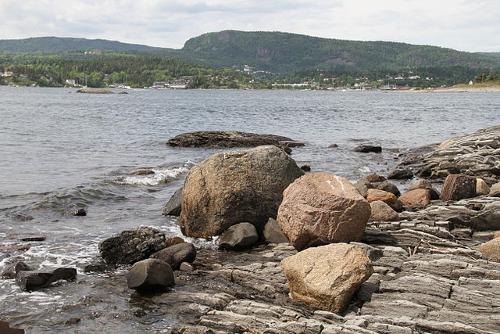 Devonian - silurian strata at the island of Langaara. The layers were folded 90 degrees during the Permian. Chalconite has been extracted industrially at the island since medieval times. The loose stones have been deposited during the last Ice age.Photo: Bjoertvedt CC 3.0 Unported no changes made
Devonian - silurian strata at the island of Langaara. The layers were folded 90 degrees during the Permian. Chalconite has been extracted industrially at the island since medieval times. The loose stones have been deposited during the last Ice age.Photo: Bjoertvedt CC 3.0 Unported no changes made
Viking Age
The Viking raid on Lindisfarne in Northern England in 793 is considered the beginning of the Viking era. The attack on Lindisfarne was followed by a series of successful raids along the coasts of the British Isles as far as the Mediterranean Sea. Norway slowly turned into a centrally controlled country during the Viking era and was ruled by different kings for centuries. After the lost battle at Stiklestad, Norway was conquered together with England by Knut the Great from Denmark.
With the death of King Cnut of Denmark (1035), Denmark temporarily ceased to be a factor of power in Norway.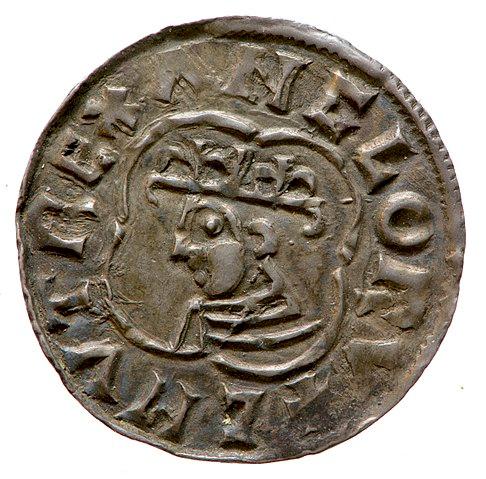 Silver coin depicting Knut the Great, NorwayPhoto: York Museums Trust Staff CC 4.0 International no changes made
Silver coin depicting Knut the Great, NorwayPhoto: York Museums Trust Staff CC 4.0 International no changes made
Magnus became king of all of Norway, now widely recognized as an independent, sovereign kingdom. Under the reign of Harald Hardhrádi an ecclesiastical division was established and laws were enacted; Oslo and Bergen developed near and under the protection of royal castles. At the beginning of the 14th century, the empire was more powerful than ever; the colonies, founded on the Orkades, Shetland, the Faroe Islands, Iceland and Greenland,, had recognized the dominion of the motherland.
Nevertheless, a cultural and economic decline was already clearly noticeable at that time, and in the 14th and 15th centuries also politically. A reduction in the number of trading ships and warships made the connections between the kingdoms more difficult, and the significance of the Hanseatic League for imports and exports increased. And the plague epidemic of the 14th century halved the population and destroyed even more serious the noble families who were reduced from 300 to 60. The clergy, important to education and culture, was also decimated.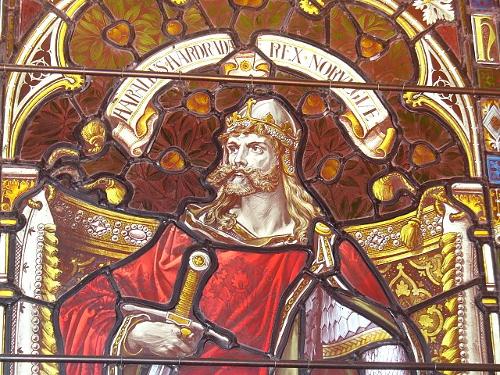 Harald Hardråde or Harald III of Norway, also Harald SigurdssonPhoto: Colin Smith CC 2.0 Generic no changes made
Harald Hardråde or Harald III of Norway, also Harald SigurdssonPhoto: Colin Smith CC 2.0 Generic no changes made
The dynasty's extinction was Norway in the Kalmar Union allied with Sweden (1319-1380) and then with ever closer ties to Denmark (until 1814). In 1533, the Danish king Christian II, who had fled to the Netherlands, tried to recapture his rule over the Nordic empires. Archbishop Engelbrechtsson also made an attempt to restore Norwegian autonomy. But after Engelbrechtsson's flight, the victorious Christian II imposed the Danish church order on the country and appointed Danish clergy in Norway. Danes supplanted Norwegians in the Council of State and Danish officials ruled the country.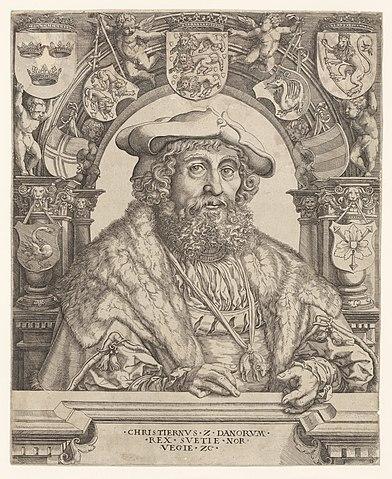 Christian II, king of DenmarkPhoto: Rijksmuseum CC 1.0 no changes made
Christian II, king of DenmarkPhoto: Rijksmuseum CC 1.0 no changes made
In the 1536 coronation charter, Norway ceased to be an independent kingdom. From the 16th century onwards, economic and cultural progress was noticeable. Own shipping grew. The Republic of the United Netherlands took an important place: there the Norwegians learned modern shipbuilding techniques and the Republic bought a lot of fish and wood. Mining also emerged, followed in the footsteps of a processing industry (mainly foundries).
In 1660 kingship became hereditary and absolute. Due to the Napoleonic Wars, Copenhagen took the French side in 1807. This led to a British blockade of Denmark and Norway, with very negative consequences for trade and export. The connections with Denmark also became increasingly difficult. But that isolation did strengthen the national feeling. To stop the desire for independence in Norway, King Frederik VI sent his nephew and Crown Prince Christiaan Frederik VIII to Norway in 1813 as stadholder to save what could be saved. But as early as 1814, Frederik VI had to cede Norway to Sweden at the Peace of Kiel. The original Norwegian colonies of Iceland, the Faroe Islands and Greenland stayed with Denmark.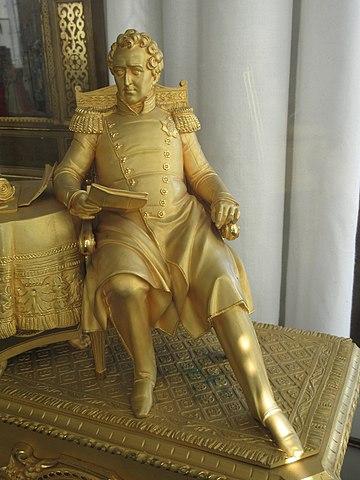 Statue of Christian VIII of DenmarkPhoto: Oleryhlolsson CC 4.0 International no changes made
Statue of Christian VIII of DenmarkPhoto: Oleryhlolsson CC 4.0 International no changes made
Union with Sweden
The Norwegians, however, were far from agreeing what had been decided about them in Kiel. Christiaan Frederik refused to transfer his functions to the governor-general appointed by the Swedish king. In February 1814 he arranged a meeting with Norwegian notables in Eidsvoll; the assembly requested the prince to take up the office of regent until a constituent assembly had been able to discuss the future form of government. The Constituent Assembly met in April and on May 17 a constitution was passed and ratified by Christiaan Frederik, who has now been proclaimed king. The constitution put an end to the absolute power of the king. Ministers were now responsible. The ministers were legally (not politically) accountable to the elected parliament, the Storting.
Meanwhile, the new state threatened a new danger: the Swedish Crown Prince, the former French Marshal Bernadotte, wanted to implement the provisions of the Kiel peace treaty with the prospect of Congress in Vienna and began hostilities against Norway. An extraordinary meeting of the Storting accepted the king of Sweden as sovereign, if Norway was allowed to keep the constitution. A truce was then reached. Swedish King Charles XIII appointed a commission to consult with delegates from the Storting on changes to be made to the Norwegian constitution. When the amendments were approved by the Storting, Charles XIII (in Norway known as Charles II) was elected King of Norway on November 4, 1814.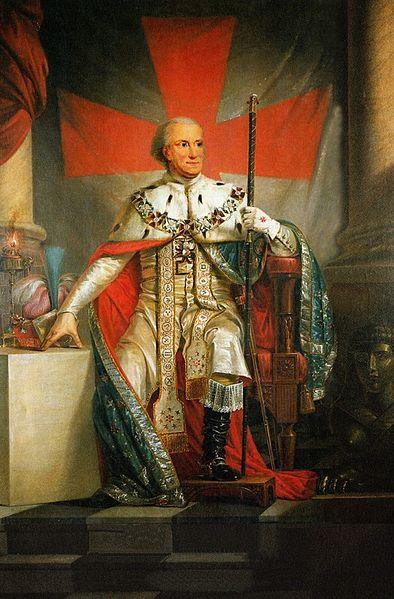 Charles XIII was King of Norway from 1814 to 1818 as Charles IIPhoto: Peter Andersson Fällmar CC 1.0 Generic no changes made
Charles XIII was King of Norway from 1814 to 1818 as Charles IIPhoto: Peter Andersson Fällmar CC 1.0 Generic no changes made
In the following year a Reichstag was drawn up and approved by the Swedish Reichstag and the Norwegian Storting. The two empires would have one king and act as a unit if war broke out. Furthermore, they would be independent and on an equal footing. In practice, however, Sweden was the most powerful party, if only because Sweden looked after foreign relations. In the middle of the 19th century the economy improved, when Norway also started to mechanize and industrialize. Politically speaking, conflicts repeatedly arose between King and Storting; the post of stadtholder was finally dissolved in 1873 by King Oscar II. The king only wanted to ratify the provisions that prevent the ministers from being members of the Storting on the condition that he was allowed absolute veto and dissolution rights.
It was not until 1884 that Oscar II allowed an amendment to the constitution and could now entrust Johan Sverdrup, the leader of the liberals, with the formation of a parliamentary cabinet. However, his party fell apart a short time later. Now that the parliamentary system had become a reality, the political parties also came to the fore. The internal contradictions faded somewhat into the background due to the deteriorating relations with Sweden.
In 1844 Oscar I had allowed the Norwegians to fly their own flag. However, it was difficult for them to accept that they had no control over their own consulates, which was of great importance to Norwegian shipping and fishing. A coalition government formed in 1905 presented Oscar II with a bill that would regulate consulate in a manner acceptable to Norway.
The king refused to ratify it, and the government demanded resignation. The king did not find one Norwegian statesman willingto form a new government. On June 7, 1905, the Storting decided unanimously that the executive authority was unable to exercise its function and requested the ministers to temporarily fulfill the king's constitutional duties. This decision was approved by a referendum shortly afterwards.
The quarreling parties entered into negotiations in Karlstad. Sweden agreed to the dissolution of the Union, provided the border fortresses were demolished. And after the republic was rejected as a form of government by popular vote, the Storting chose the Danish prince Charles as king. He took the name Haakon VII and chose Alt for Norge (Everything for Norway) as his motto.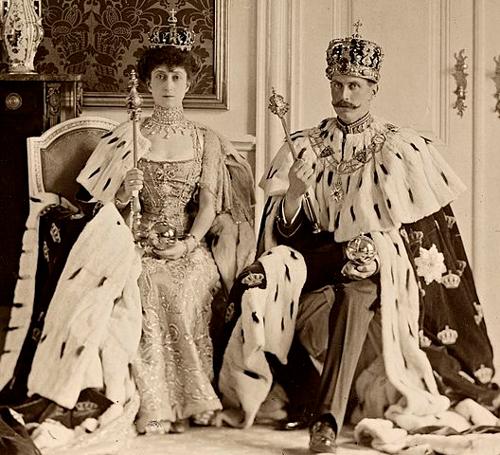 King Haakon VII and queen Maud, NorwayPhoto: National Library of Norway: Peder O. Aune CC 2.0 Generic no changes made
King Haakon VII and queen Maud, NorwayPhoto: National Library of Norway: Peder O. Aune CC 2.0 Generic no changes made
The many conflicts with Sweden were so prevalent that they diverted attention from other matters. Culturally, ties with Denmark gradually loosened without being replaced by ties with Sweden. For example, the written language developed more and more in the Norwegian direction. In addition, in the middle of the century Norway got a second - own - written language, the 'landsmål' (l'nynorsk'), reconstructed on the basis of mainly West Norse dialects. The two languages became fully equivalent in 1885. Parliament, which could only meet once every three years from 1814, was able to play its role as parliament better from 1869 by allowing it to meet annually.
Although shipping, fishing, industry and mining increased prosperity, especially in the second half of the 19th century, the predominantly agricultural land became too small to offer all its subjects good livelihoods. Extensive emigration started, especially to the United States: from 1866 to 1915 more than 700,000 Norwegians emigrated. The country's infrastructure changed dramatically due to the construction of roads and railways and the establishment of boat connections.
Norway's independent state
In the early years of independence, relations with Sweden remained cool. The November 1907 treaty with England, France, Russia and the German Empire, whereby Norway promised not to give up a part of its territory, while the Great Powers committed themselves to protecting the same territorial integrity and independence, was seen in Sweden as an expression of suspicion and aroused great resentment there. After the 1906 elections, the Workers' Party became a significant factor. Women's suffrage was introduced in 1907. The sale of alcoholic beverages was completely banned in 1919.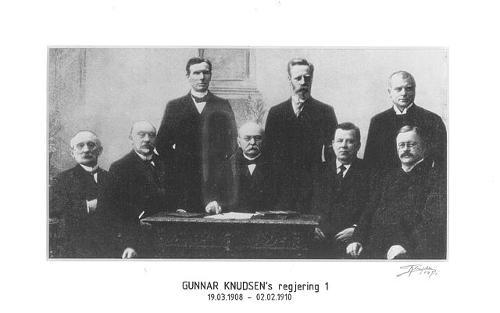 Gunnar Knudsen's second government, NorwayPhoto: Venstre from Norway CC 2.0 Generic no changes made
Gunnar Knudsen's second government, NorwayPhoto: Venstre from Norway CC 2.0 Generic no changes made
The First World War brought the Scandinavian countries closer together. Being neutral, they had in many ways the same political and economic interests. Economically, the war was a very advantageous time for shipowners, industries and peasants. Consumers bore the burden because the basic necessities of life rose sharply in price. The extraordinary powers of the government caused great discontent. More or less related to the peace talks in Versailles, Norway acquired sovereignty over Svalbard (Spitsbergen) in 1925. In 1919 the district system was weakened and universal suffrage was introduced. A major strike in 1921 against plans to cut wages led by the revolutionary forces in the workers' movement then predominant led to a defeat for the trade union movement. Conservative forces in society were strengthened. During this time the Workers' Party fell apart.
In 1927 the now moderate Workers' Party became the largest party again. After a socialist governmental interlude in 1928, the Johan Nygaardsvold cabinet came to an end in 1935 to the long alternation of liberal and conservative cabinets. The Social Democrats retained power until 1963. The government's main task was to get the economy out of the doldrums and restore employment. Far right: Johan Nygaardsvold, Prime Minister of NorwayPhoto:Arbeiderbladet CC 4.0 International no changes made
Far right: Johan Nygaardsvold, Prime Minister of NorwayPhoto:Arbeiderbladet CC 4.0 International no changes made
World War II
After the outbreak of war, Norway managed to remain neutral until April 1940. On April 8, the Allies announced, by laying mines within the three-mile zone, that they would stop the movement of German ships off the Norwegian coast. The following day the German invasion followed. German troops landed in Oslo, Bergen, Trondheim and Narvik. King and government fled to London, from where the fighting continued. Despite poor organization, Norwegian troops managed to resist for about six weeks, helped in Narvik by the English and French.
On Feb. 1942 a new government was formed, with the German vassal Quisling as prime minister. An active resistance movement developed in the country. In October 1944, Soviet troops penetrated Norwegian territory and occupied Kirkenes. Much of Finnmark soon fell into their hands. The Germans withdrew from the north, wreaking havoc. The Germans capitulated on May 8, 1945 and Norway regained its freedom.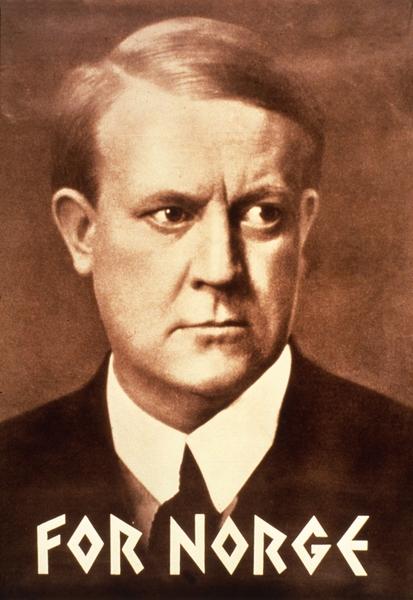 Vidkun Quisling, leader of the Nasjonal Samling party in Norway and Prime Minister from 1942Photo: Nasjonal Samling, fra samlingene til Hedmarksmuseet in the public domain
Vidkun Quisling, leader of the Nasjonal Samling party in Norway and Prime Minister from 1942Photo: Nasjonal Samling, fra samlingene til Hedmarksmuseet in the public domain
EU yes or no?
Immediately after the war, Social Democrat Einar Gerhardsen formed a national government, which remained in office until the elections in the autumn. The Social Democrats retained the majority until 1961. In 1965, a bourgeois coalition government came to power. In 1971 this coalition succumbed to internal divisions over the accession to the EU. The Workers' Party formed a minority government and made its survival dependent on the outcome of the EU referendum. Norway spoke out against the EU.
In 1981 Nordli was succeeded by Mrs. Gro Harlem Brundtland, Norway's first female Prime Minister. In 1989 the Workers' Party lost the elections and for a year the country was run by a center-right minority cabinet. That government fell in October 1990 on the question of Norway's possible accession to the European Community, a problem that has been deeply divided in Norway since 1970. Brundtland wanted a closer relationship with the EU.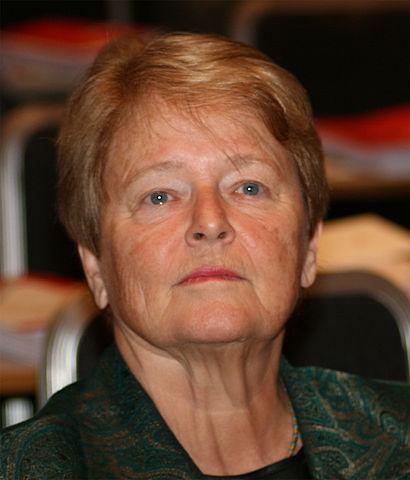 Gro Harlem Brundtland, Norway's first female Prime MinisterPhoto: GAD CC 3.0 Unported no changes made
Gro Harlem Brundtland, Norway's first female Prime MinisterPhoto: GAD CC 3.0 Unported no changes made
Jan 17. King Olaf V died in 1991. He was succeeded by his son Harald V. In October 1992 an agreement was reached on the European Economic Area with the other countries of the European Free Trade Association (EFTA) and the twelve EU Member States. Negotiations with the EU were reopened in 1993. The big losers in the parliamentary elections in September 1993 were the conservatives and the small right-wing Progress Party. The election profit was enough for Prime Minister Brundtland to continue her minority government. The Norwegians had repeatedly rejected EC membership and the referendum held at the end of November 1994 was no exception: more than half voted against.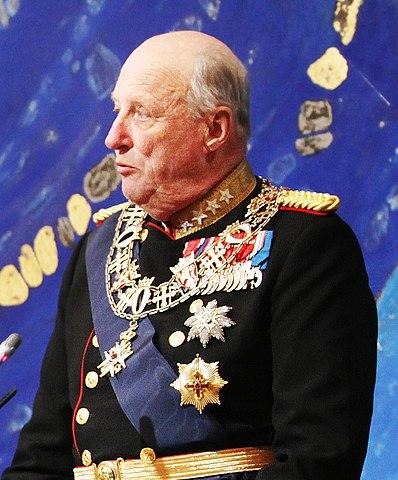 King Harald V of NorwayPhoto: UKOM (foto: Nebojša Tejic/STA) CC 3.0 Unported no changes made
King Harald V of NorwayPhoto: UKOM (foto: Nebojša Tejic/STA) CC 3.0 Unported no changes made
Economically, Norway developed in the first half of the 1990s very good. The continued growth was mainly driven by oil and natural gas revenues, which also underlined the one-sidedness and vulnerability of the economy. Prime Minister Brundtland resigned at the end of 1996. She had been head of government for 10 years for the past 15 years.
Norway has been ruled by minority governments for the last 30 years. However, this changed in September 2005. The center-right minority government led by the Christian Democratic Prime Minister Kjell Magne Bondevik had to make way for the current Red-Green Alliance led by the Social Democratic Prime Minister Jens Stoltenberg of the Workers' Party (Arbeidersparti). The Workers' Party, which had suffered the biggest defeat in its history in September 2001, emerged as the big winner in September 2005 and formed a majority coalition with the Socialist party - comparable to SP plus Green Left - (Sosialistisk Venstre) and the Center Party. (Senterparti).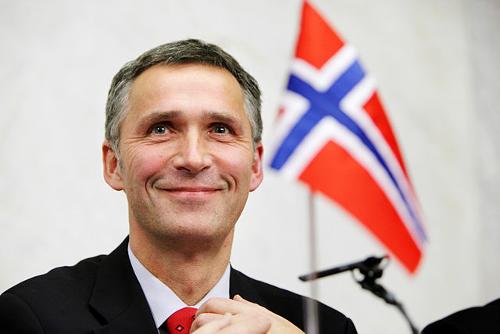 Jens Stoltenberg, Prime Minister of Norway and Secretary General of NATOPhoto: Magnus Fröderberg/norden.org CC 2.5 Denmark no changes made
Jens Stoltenberg, Prime Minister of Norway and Secretary General of NATOPhoto: Magnus Fröderberg/norden.org CC 2.5 Denmark no changes made
In the parliamentary elections in September 2009, Stoltenberg won with a narrow majority. On June 19, 2010, Crown Princess Victoria marries gym owner Daniel Westling. In July 2011, Anders Behring Breivik committed the largest mass murder in the history of modern Norway. The right-wing extremist is carrying out a massacre on the island of Utoya.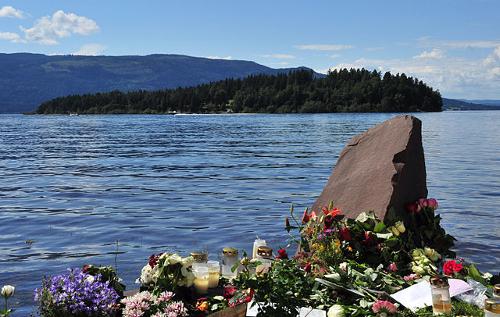 Utøya, the place of the attack on the Norwegian Labour Partys youth campPhoto: Paalso; Paal Sørensen CC 3.0 Unported no changes made
Utøya, the place of the attack on the Norwegian Labour Partys youth campPhoto: Paalso; Paal Sørensen CC 3.0 Unported no changes made
In September 2013, elections will be won by a center-right bloc led by Erna Solberg. She will be given a new mandate in the elections in September 2017. The next elections are scheduled for September 2021.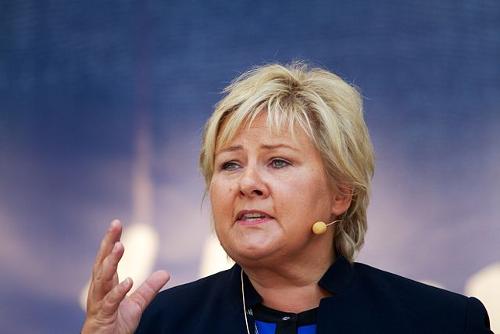 Erna Solberg, prime minister of NorwayPhoto: Kjetil Ree CC 3.0 Unported no changes made
Erna Solberg, prime minister of NorwayPhoto: Kjetil Ree CC 3.0 Unported no changes made
Jonas Gahr Store becomes prime minister is October 2021.
Sources
Dominicus, J. / Noorwegen
Gottmer
Hoogendoorn, H. / Noorwegen
ANWB
Meesters, G. / Zuid-Noorwegen
ANWB media
Schagen, K. / Noorwegen
Kosmos-Z&K
CIA - World Factbook
BBC - Country Profiles
Last updated November 2025Copyright: Team The World of Info